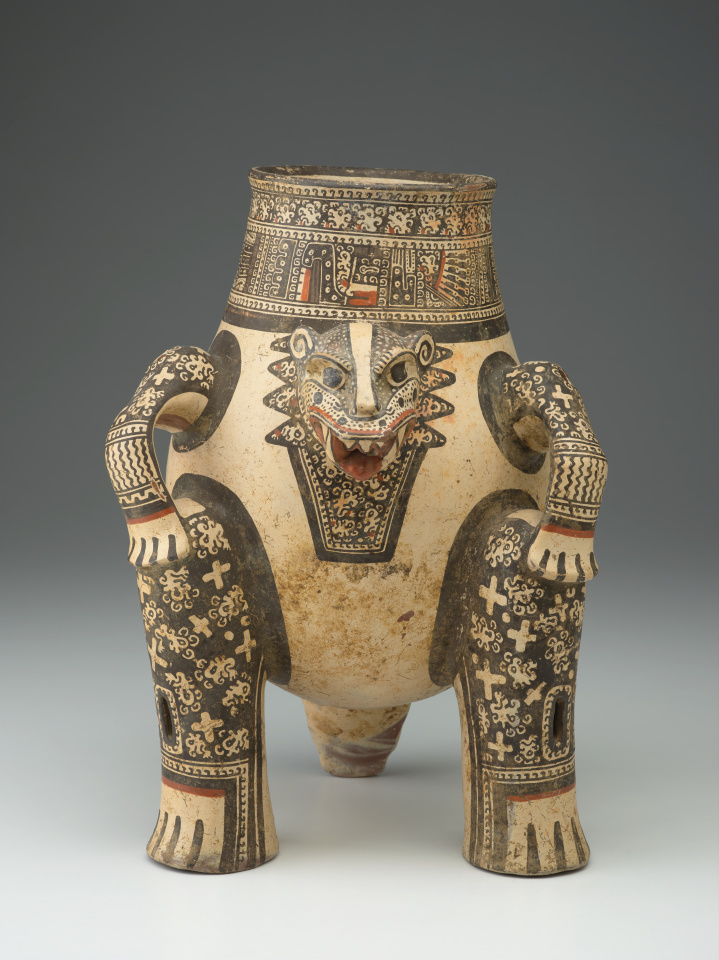Jaguar Vase (work of art)
Artwork Info
Key Ideas
- This vessel is made up of the head, legs, and tail of a jaguar affixed to a jug. The placement of the jaguar’s legs makes it appear to be sitting like a human, with the tail being used to support the figure.
- The artist used red, black, and white paint to create detailed patterns emphasizing the jaguar’s features. These patterns mimic a real-life jaguar’s spots. Ancient cultures believed these spots represented the stars in the night sky.
- This effigy, a vessel designed to represent a human or animal, would have been used to serve drinks. The ceramic bead within the hollow jaguar snout would have moved and made a sound that mimicked the roar of a jaguar when liquid was poured out of the spout.
- Jaguars were believed to be a god of the underworld by ancient cultures because of their strength, stealth, and ability to swim. Indigenous kings wore jaguar skins as a symbol of royalty.
Learn More
This effigy vessel from Costa Rica is a ceramic jug with the head, legs, and tail of a jaguar. The sculpted head of the jaguar is painted in great detail to highlight its ears, eyebrows, eyes, snout, and sharp teeth. Inside the jaguar’s hollow snout is a round ceramic bead that would have made a roaring sound when water was poured from the vessel’s spout. The position of the jaguar’s front and back legs resembles a seated human form with both arms resting on the knees. The jaguar’s tail is used as the support on which it sits.
An effigy is usually a sculpture or a model of a person. In ancient Costa Rica, jaguar effigy vessels like this one were used to represent a deceased person. Objects depicting fierce predators like the jaguar were believed to transfer their strength to the deceased.
As a top-level predator (and the largest and strongest cat native to the Americas), the jaguar was worshiped and admired by ancient cultures. They believed the jaguar to be a god of the underworld because of its natural ability to swim, to see well in darkness, and to remain hidden from sight as it silently stalks its prey. Ancient cultures also believed that the jaguar’s rosettes (black spots) represented the Milky Way full of stars. Indigenous kings wore jaguar pelts, or skins, as a symbol of royalty.
Additional Resources
Resources for Teachers:
- Read an article about effigies.
Resources for Students
- Learn more about jaguars, the largest cat species in the Americas.
- Learn more about the role of jaguars in ancient American culture.





